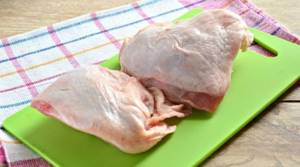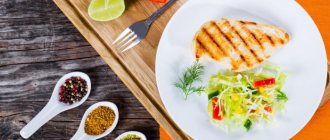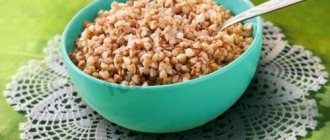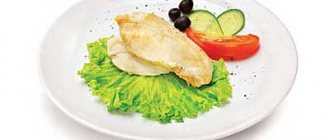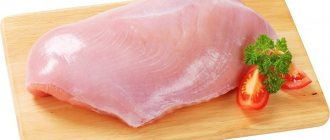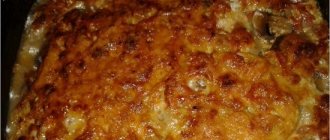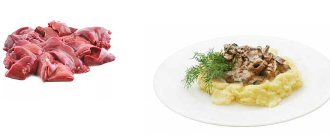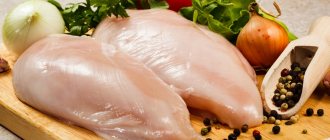But you may be wondering how many calories are in that chicken on your plate.
People eat various parts of chicken, including chicken breast, thighs, wings, and drumsticks. Each part contains a different number of calories and different proportions of protein and fat.
Here are the calories for the most popular parts of chicken.
How many calories are in chicken breast, thighs, wings and drumsticks?
Chicken breast: 284 calories
Chicken breast is one of the most popular parts of chicken. It is rich in protein and low in fat, making it an excellent choice for people trying to lose weight.
One cooked skinless, boneless chicken breast (172 grams) contains the following nutrients ():
- Calories : 284 kcal.
- Protein : 53.4 g.
- Carbohydrates : 0 g.
- Fat : 6.2 g.
A 100 gram serving of chicken breast contains 165 calories, 31 grams of protein and 3.6 grams of fat ().
This means that approximately 80% of the calories in a chicken breast come from protein and 20% from fat.
Keep in mind that these amounts are for chicken breast without any added ingredients. Once you start cooking it in oil or adding marinades or sauces, you will increase the total number of calories, carbohydrates and fat.
Summary:
Chicken breast is a low-fat, high-protein part of the chicken. One chicken breast contains 284 calories, or 165 calories for every 100 grams. About 80% of calories come from protein and 20% from fat.
How to cook?
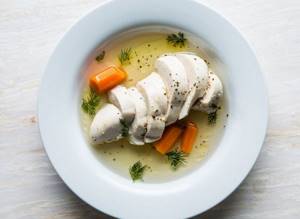
Chicken meat must first be thoroughly washed. Then put it in a saucepan and fill it with filtered water. Wait for the liquid to boil. Then drain the so-called first broth. Pour clean water over the meat. When it boils, foam will appear. It needs to be removed.
Why do you need to drain the first water? This is done to get rid of antibiotics, as well as hormones that are used when raising chicken. If you are cooking poultry, you can skip the broth.
On a note! Serve boiled chicken with rice porridge - and you are guaranteed a healthy lunch.
Chicken thigh: 109 calories
Chicken thigh is slightly more tender and flavorful than chicken breast due to its higher fat content.
One cooked skinless, boneless chicken thigh (52 grams) contains ():
- Calories : 109 kcal.
- Protein : 13.5 g.
- Carbohydrates : 0 g.
- Fat : 5.7 g.
A 100 gram serving of chicken thigh contains 209 calories, 26 grams of protein and 10.9 grams of fat ().
Thus, 53% of calories come from protein and 47% from fat.
Chicken thighs are often less expensive than chicken breasts, making them a good choice for anyone.
Summary:
One chicken thigh contains 109 calories, or 209 calories for every 100 grams. Calories come 53% from protein and 47% from fat.
Tips from experienced housewives
You can make a delicious goulash using boiled chicken pulp. It requires the following products: chicken, carrots, onions, tomato paste, sifted flour, garlic, herbs.
Cook the chicken. Cut the pulp into pieces. Fry carrots and onions in a frying pan. Add tomato paste, garlic cloves passed through a press, and a little sifted flour. While stirring, simmer the sauce for ten minutes. Then add chicken meat to it and simmer for a couple of minutes. At the end, add chopped herbs to the goulash. Ready!
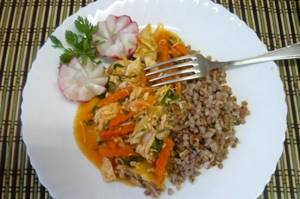
Chicken wings: 43 calories
When you think of a healthy part of chicken, chicken wings probably don't come to mind.
However, as long as they are not coated in breading or sauce or grilled, they can easily fit into a healthy diet.
One cooked skinless, boneless chicken wing (21 grams) contains ():
- Calories : 42.6 kcal.
- Protein : 6.4 g.
- Carbohydrates : 0 g.
- Fat : 1.7 g.
A 100 gram serving of chicken wings contains 203 calories, 30.5 grams of protein and 8.1 grams of fat ().
This means that 64% of calories come from protein and 36% from fat.
Summary:
One chicken wing contains 43 calories, and a 100 gram serving of wings contains 203 calories. Calories come 64% from protein and 36% from fat.
Bake in Madeira
Cooked calorie content is higher - as much as 216 kcal, so people on a diet rarely indulge. However, they also have holidays, and for such occasions, here is our recipe. A kilogram of thighs, washed, with the fat cut off, is placed in a greased form, sprinkled with salt and your favorite seasonings and “massaged” for their better distribution. Place skin side up. Then a glass of Madeira is poured out (you can also use dry wine, but the taste will not be the same), the mold is wrapped in foil and placed in the oven, where it spends half an hour at 210 Celsius. Next, the foil is removed, and the thighs are brought to a crust without it.
By the way, if you remove the skin, the calorie content of the dish will drop to 195 kcal.
Chicken drumsticks: 76 calories
Chicken legs consist of two parts - thigh and drumstick. Chicken drumstick is the lower part of the leg.
One cooked skinless, boneless chicken drumstick (44 grams) contains ():
- Calories : 76 kcal.
- Protein : 12.4 g.
- Carbohydrates : 0 g.
- Fat : 2.5 g.
A 100 gram serving of chicken drumsticks contains 172 calories, 28.3 grams of protein and 5.7 grams of fat ().
When it comes to counting calories, about 70% comes from protein and 30% from fat.
Summary:
One chicken drumstick contains 76 calories, and 100 grams contains 172 calories. 70% of calories come from protein and 30% from fat.
Stew with pears
If you are completely tired of boiled foods, allow yourself to go a different route occasionally. stewed ones, of course, are somewhat higher in calories: every 100 grams of them will add 185 kcal to your body, but this is not too much. But you will remember it for a long time. First, chop the onion into squares and grate a small ginger root. The onion is sautéed (preferably in olive oil), then ginger, a couple of small cinnamon sticks, and a little salt and pepper are added. After mixing, four thighs are placed in this sauce, if necessary, a quarter glass of water is added, the container is closed and left alone for 40 minutes. Three rather hard sweet and sour pears are cut into slices and placed in melted butter mixed with a couple of spoons of honey. When the fruits are caramelized, they are transferred to the chicken and stewed together for a quarter of an hour. You can enjoy it!
Other parts of chicken
While chicken breast, thighs, wings and drumsticks are the most popular parts of chicken, there are also several others to choose from.
Here are the calorie content of some other parts of chicken (, , , ):
- Chicken strips (small breast muscles of chicken) : 263 calories per 100 grams.
- Chicken backs : 137 calories for every 100 grams.
- Dark meat : 125 calories for every 100 grams.
- Light meat : 114 calories for every 100 grams.
Summary:
The amount of calories in different parts of chicken varies. Light meat has the lowest amount of calories, while chicken strips have the highest level.
Back
Despite its rather unpresentable appearance, chicken back is rightfully called the queen of chicken broths. The low calorie content, especially with the skin removed, allows the broth to be consumed even by overweight people.
Vitamins A, C and E contained in backs have a beneficial effect on human health. In addition, magnesium, iron, potassium, selenium, etc. improve memory and mood, and prevent tooth decay.
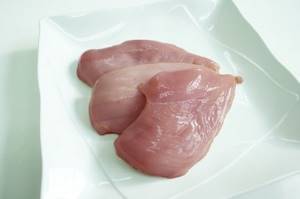
Should you wash chicken before cooking? More details
Chicken skin adds calories
While a skinless chicken breast contains 284 calories with 80% protein and 20% fat, these numbers change dramatically when the skin is included ().
One cooked boneless, skin-on chicken breast (196 grams) contains ():
- Calories: 386 kcal.
- Protein: 58.4 g.
- Fat: 15.2 g.
In skin-on chicken breast, 50% of the calories come from protein and 50% from fat. Additionally, eating skin adds almost 100 calories ().
Likewise, one skin-on chicken wing (34 grams) contains 99 calories, compared to 42 calories for a skinless wing (21 grams). Thus, 60% of the calories in chicken wings with skin come from fat, compared to 36% in a wing without skin (,).
So if you're watching your weight or fat intake, eat skinless chicken to minimize calories and fat.
Summary:
Eating chicken with the skin adds a significant amount of calories and fat. Remove skin before consumption to reduce calories.
Frying thighs
This, of course, is the most harmful method of cooking: fried ones will add as much as 245 kcal. But on the most solemn occasion, you can treat yourself to such a delicacy. About six washed thighs are rubbed with pepper and salt, wrapped in a bag and left overnight to marinate. You can skip this step, but the marinated ones will be much tastier. In a frying pan with a thick bottom, sunflower, odorless oil is heated to bubbles, chicken parts are placed and fried for five minutes, then turned over - and the procedure is repeated. With such turns, the process lasts about a third of an hour in total. When the juice begins to stand out clean, without blood, the thighs are smeared with grated garlic, the frying pan is covered for about ten minutes (for rest and flavoring), and the delicious meat is served for dinner.
Compared to animal meat, chicken is lower in calories, which is why it is included in many diets. Poultry meat is not uniform—a dry, fibrous breast has fewer calories than a juicy thigh. But it is this that many consider the most delicious part of the bird. The thigh is an enlarged part of the leg located above the lower leg. The meat adheres to a small bone and is relatively dark in color.
How you cook chicken matters
Chicken meat alone contains relatively low amounts of calories and fat compared to other meats. But once you start adding butter, sauce, batter and breading, the calories start adding up.
For example, a cooked skinless, boneless chicken thigh (52 grams) contains 109 calories and 5.7 grams of fat ().
But the same battered chicken thigh contains 144 calories and 8.6 grams of fat. A chicken thigh fried in a flour coating contains even more, with 162 calories and 9.3 grams of fat (,).
Similarly, one cooked boneless, skinless chicken wing (21 grams) contains 43 calories and 1.7 grams of fat ().
However, a chicken wing baked in barbecue sauce contains 61 calories and 3.7 grams of fat. This compares to a wing fried in a flour coating, which contains 61 calories and 4.2 grams of fat (, ).
Therefore, cooking methods that add a little fat, such as boiling, sautéing, frying, grilling and steaming, are the best choices for keeping calorie levels low.
Summary:
Cooking techniques such as breading and coating the meat in sauce can add more than a few calories to your chicken. For the ultimate low-calorie version of chicken, you can boil, grill, stew, or steam it.
Vitamin content
Table 1
| Vitamins | Content | Daily norm |
| A (retinol) | 23 mcg | 2.3 % |
| E (α-, β-, γ-tocopherols) | 0.21 mg | 2.1 % |
| D (lamisterol) | 0.1 mcg | 4 % |
| B1 (thiamine) | 0.07 mg | 4.87 % |
| B2 (riboflavin) | 0.15 mg | 8.06 % |
| B3 (PP) (nicotinamide) | 4.63 mg | 24.34 % |
| B4 (choline) | 45.7 mg | 9.14 % |
| B6 (pyridoxine) | 0.35 mcg | 17.35 % |
| B9 (folacin) | 3 mcg | 1.5 % |
| B12 (cobalamin) | 0.62 mcg | 20.67 % |
Chicken thigh contains vitamins with high, medium and low levels, if we consider them according to the approved standards for the significance of the nutritional value of the product.
At the highest level of importance in the food value chain are:
- PP, participates in the formation of hemoglobin.
- B6, participates in the metabolism of lipids and amino acids.
- B12 is involved in many metabolic processes in the body.
Vitamins at a medium level of importance include:
- B2, maintains body tone.
- B4, is involved in the biosynthesis of heme and proteins, cell proliferation, and tissue respiration.
Vitamins of low content include:
- A, takes part in all functions of the body related to its growth and proper metabolism, preserves the structure of the cornea of the eye.
- E, keeps the muscular system in good shape.
- D, takes part in the formation of bone and dental tissue.
- B1, required to normalize the nervous and muscular systems.
- B9, supports the hematopoietic and digestive system.
Summarize
Chicken is a popular food item, and most parts are low in calories and fat, providing adequate protein.
Here are calorie calculations of the most favorite parts of chicken without bones and skin per 100 grams:
- Chicken breast : 165 calories.
- Chicken thigh : 209 calories.
- Chicken wing : 203 calories.
- Chicken drumstick : 172 calories.
Please note that eating leather or using unhealthy cooking methods adds calories.
Tags: Calories, Chicken
- Related Posts
- Halibut: benefits and harm to the body
- Pangasius: benefits and harm to the body
- Masago in rolls: what is it? The benefits and harms of capelin caviar
« Previous entry
Choice
Before you cook chicken thighs, you need to choose them correctly:
- you should press the product with your finger - if the resulting dent quickly returns to its original form, it means the bird is fresh;
- the skin should not have yellow spots or strange deformations;
- Any foreign smells can alert you, except for the fresh smell of meat (if the bird is frozen, then it will be difficult to determine its freshness in this way).
